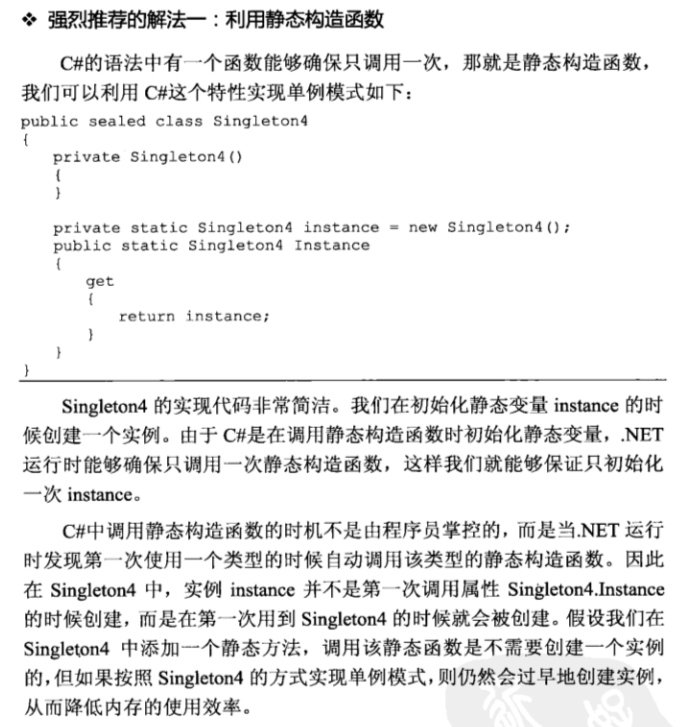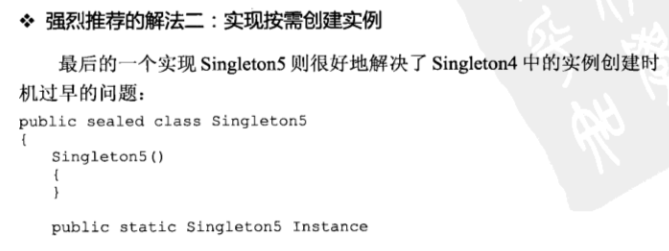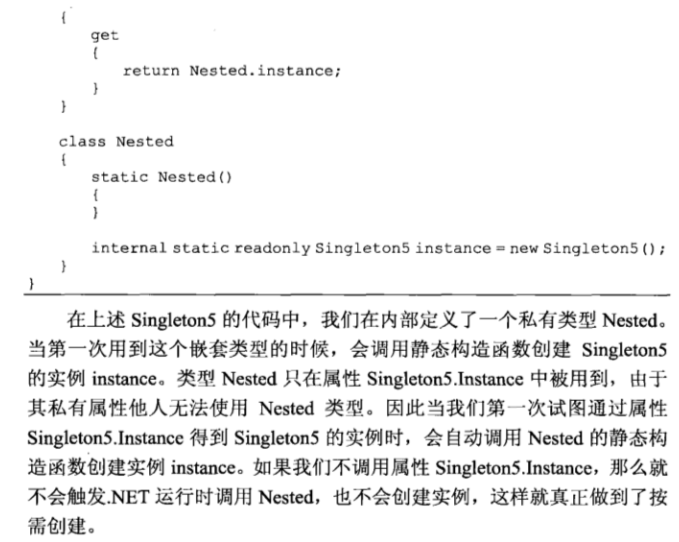单例模式(Singleton Pattern)是Java 中最简单的设计模式之一。这种类型的设计模式属于创建型模式,它提供了一种创建对象的最佳方式。
这种模式涉及到一个单一的类,该类负责创建自己的对象,同时确保只有单个对象被创建。 这个类提供了一种访问其唯一的对象的方式,可以直接访问,不需要实例化该类的对象。
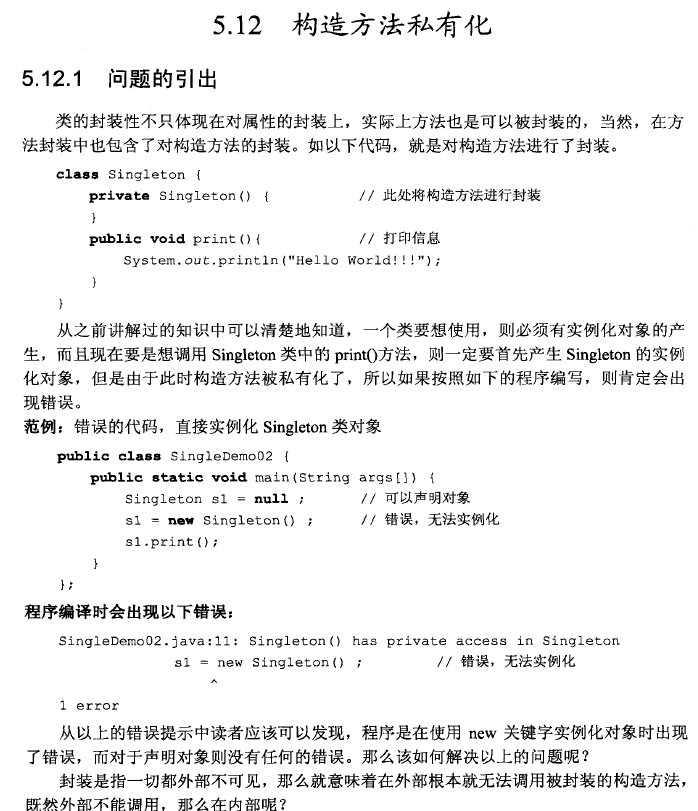
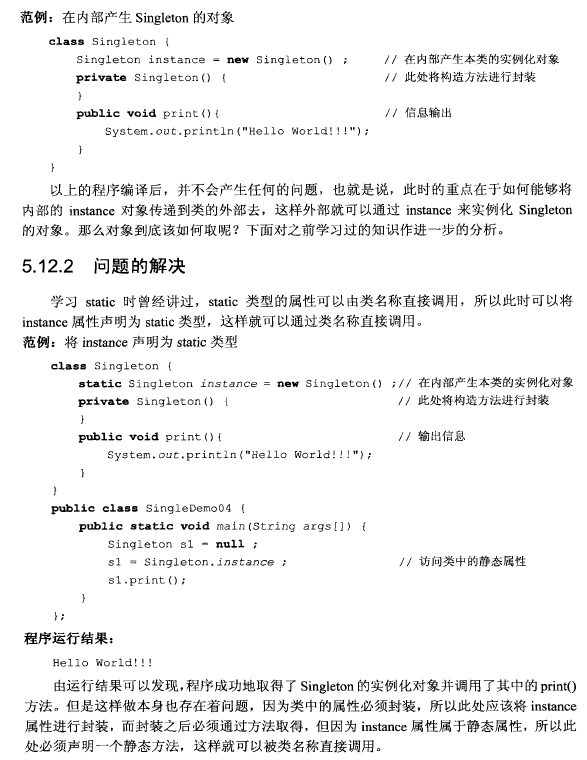
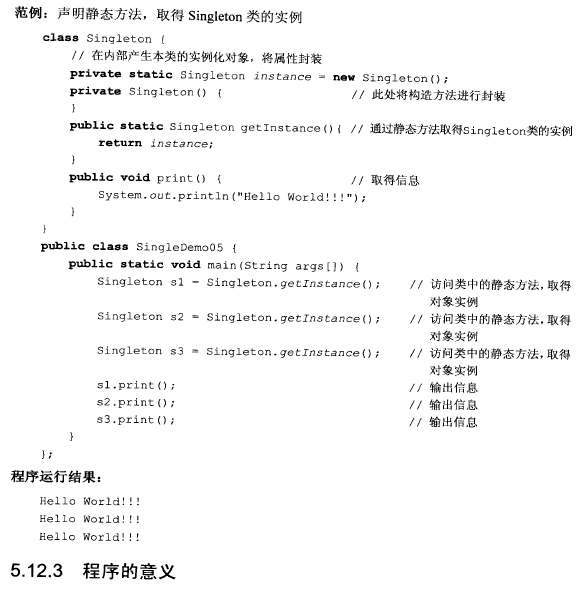

1.没有使用单例:重复调用会创建多个对象
1
2
3
4
5
6
7
8
9
10
11
12
13
14
15
16
17
18
19
20
21
22
23
24
25
26
27
| package java_basic;
class Singleton{
public Singleton(){
}
public void print(){
System.out.println("Hello Word");
}
}
public class singleton {
public static void main(String[] args) {
Singleton s1 = new Singleton();
Singleton s2 = new Singleton();
Singleton s3 = new Singleton();
System.out.println(s1.hashCode());
System.out.println(s2.hashCode());
System.out.println(s3.hashCode());
s1.print();
s2.print();
s3.print();
}
}
|

2.饿汉式单例:(一定是安全的,只有一份对象)
1.构造器私有化
2.声明私有的静态属性,同时创建该对象
3.对外提供访问属性的静态方法,确保该对象存在。
写法1:初始化就加载
1
2
3
4
5
6
7
8
9
10
11
12
13
14
15
16
17
18
19
20
21
22
23
24
25
26
27
28
29
30
31
32
33
| package java_basic;
class Singleton{
private static Singleton instance = new Singleton();//声明私有的静态属性,同时创建该对象
private Singleton(){ //构造函数私有化
}
public static Singleton getInstance(){ //对外提供访问属性的静态方法,确保该对象存在
return instance;
}
public void print(){
System.out.println("Hello Word");
}
}
public class singleton {
public static void main(String[] args) {
Singleton s1 = Singleton.getInstance();
Singleton s2 = Singleton.getInstance();
Singleton s3 = Singleton.getInstance();
System.out.println(s1.hashCode());
System.out.println(s2.hashCode());
System.out.println(s3.hashCode());
s1.print();
s2.print();
s3.print();
}
}
|
可以看到输出的hashCode只有一个,证明new出的对象是同一个

写法2:类在使用的时候加载,懒加载
1
2
3
4
5
6
7
8
9
10
11
12
13
14
15
16
17
18
19
20
21
22
23
24
25
26
27
28
29
30
31
32
33
34
35
36
| package java_basic;
class Singleton{
// 再定义一个Single类,Single类在使用的时候加载,懒加载
private static class Single{
private static Singleton instance = new Singleton(); //声明私有的静态属性,同时创建该对象
}
private Singleton(){ //构造函数私有化
}
public static Singleton getInstance(){ //对外提供访问属性的静态方法,确保该对象存在
return Single.instance;
}
public void print(){
System.out.println("Hello Word");
}
}
public class singleton {
public static void main(String[] args) {
Singleton s1 = Singleton.getInstance();
Singleton s2 = Singleton.getInstance();
Singleton s3 = Singleton.getInstance();
System.out.println(s1.hashCode());
System.out.println(s2.hashCode());
System.out.println(s3.hashCode());
s1.print();
s2.print();
s3.print();
}
}
|

3.懒汉式单例:(不一定安全,确保只有一份对象需要synchronized)
1.构造器私有化
2.声明私有的静态属性
3.对外提供访问属性的静态方法,确保该对象存在。
写法1,多线程下不安全
1
2
3
4
5
6
7
8
9
10
11
12
13
14
15
16
17
18
19
20
21
22
23
24
25
26
27
28
29
30
31
32
33
34
35
| package java_basic;
class Singleton{ //懒汉模式,多线程下不安全
private static Singleton instance; //声明私有的静态属性,但是不创建该对象
private Singleton(){ //构造函数私有化
}
public static Singleton getInstance(){ //对外提供访问属性的静态方法,确保该对象存在
if(instance == null){
instance = new Singleton();
}
return instance;
}
public void print(){
System.out.println("Hello Word");
}
}
public class singleton {
public static void main(String[] args) {
Singleton s1 = Singleton.getInstance();
Singleton s2 = Singleton.getInstance();
Singleton s3 = Singleton.getInstance();
System.out.println(s1.hashCode());
System.out.println(s2.hashCode());
System.out.println(s3.hashCode());
s1.print();
s2.print();
s3.print();
}
}
|

写法2:加锁
1
2
3
4
5
6
7
8
9
10
11
12
13
14
15
16
17
18
19
20
21
22
23
24
25
26
27
28
29
30
31
32
33
34
35
36
37
38
39
| package java_basic;
class Singleton{ //懒汉模式,加锁
private static Singleton instance; //声明私有的静态属性,但是不创建该对象
private Singleton(){ //构造函数私有化
}
public static Singleton getInstance(){ //对外提供访问属性的静态方法,确保该对象存在
if(instance == null){
synchronized(Singleton.class){//加锁
if(null == instance){
instance = new Singleton();
}
}
}
return instance;
}
public void print(){
System.out.println("Hello Word");
}
}
public class singleton {
public static void main(String[] args) {
Singleton s1 = Singleton.getInstance();
Singleton s2 = Singleton.getInstance();
Singleton s3 = Singleton.getInstance();
System.out.println(s1.hashCode());
System.out.println(s2.hashCode());
System.out.println(s3.hashCode());
s1.print();
s2.print();
s3.print();
}
}
|
懒汉式参考:Java学习之线程锁–单例模式写法–synchronized
4.枚举单例:(线程安全)
1
2
3
4
5
6
7
8
9
10
11
12
| public enum Singleton{
//定义1个枚举的元素,即为单例类的1个实例
INSTANCE;
// 隐藏了1个空的、私有的 构造方法
// private Singleton () {}
}
// 获取单例的方式:
Singleton singleton = Singleton.INSTANCE;
|
《大话设计模式》P232

P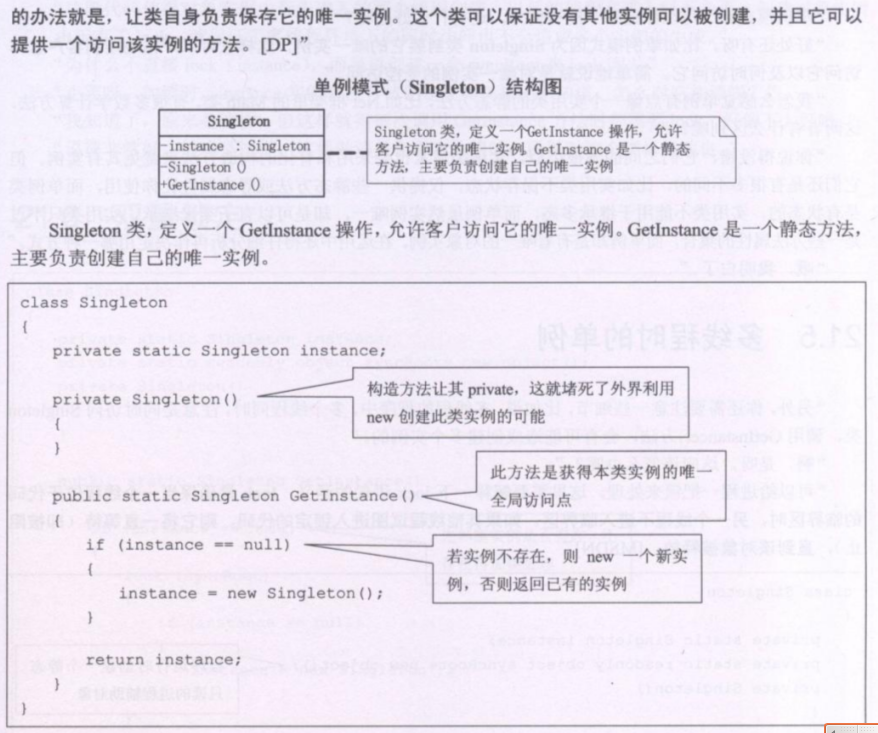
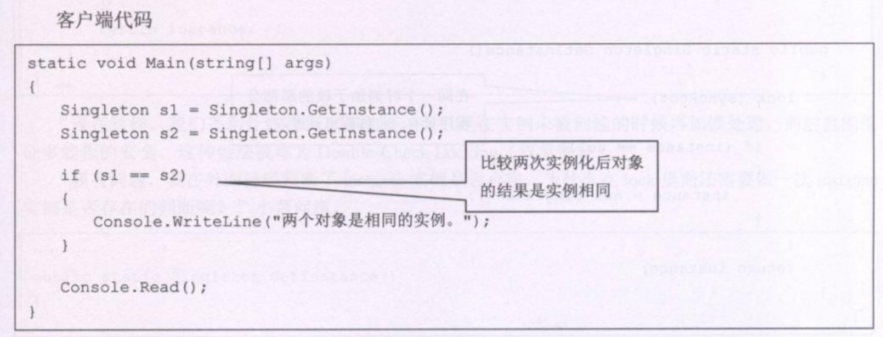
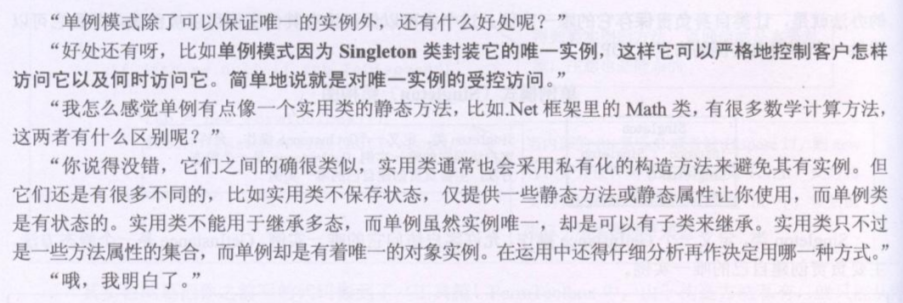
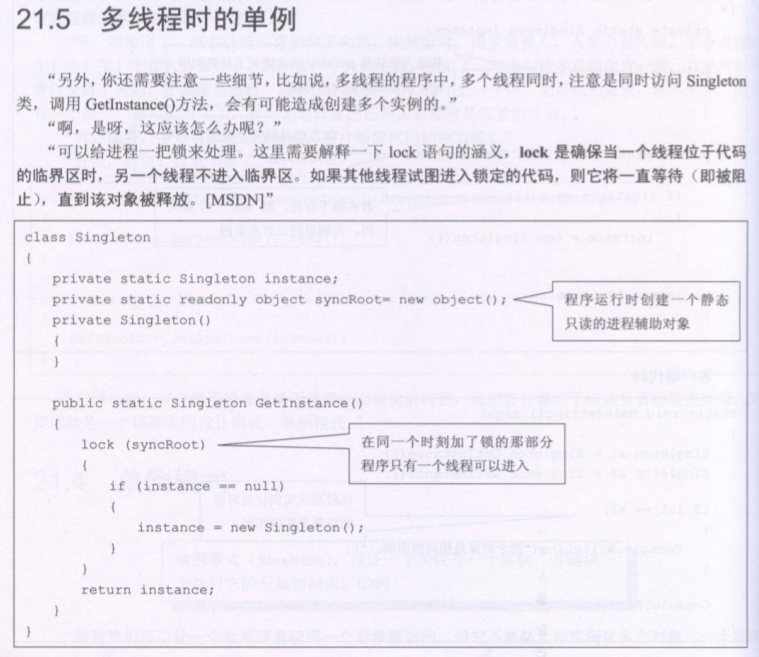
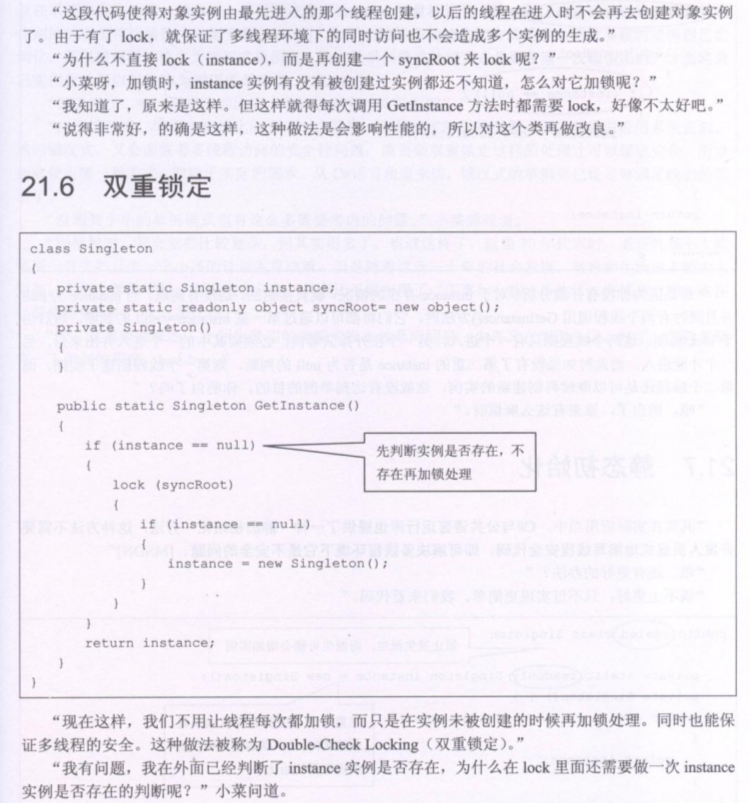
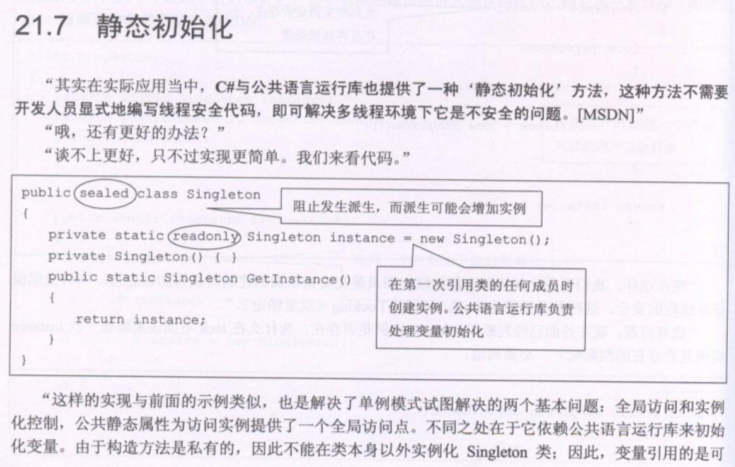
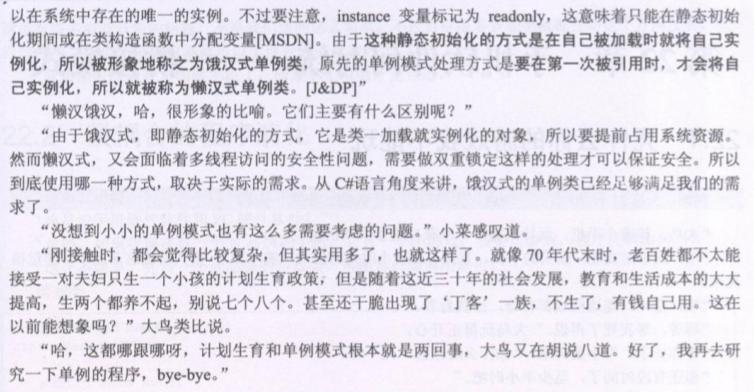
《剑指Offer》P51
